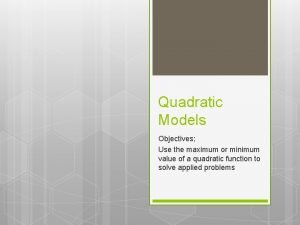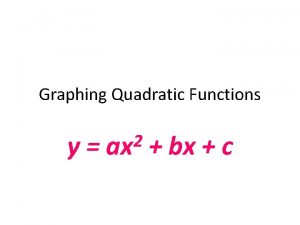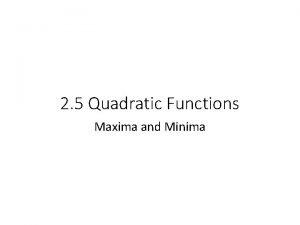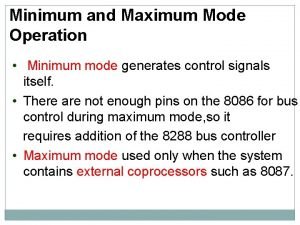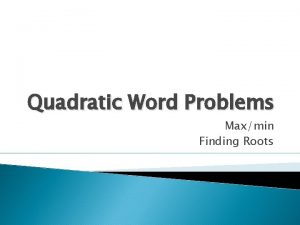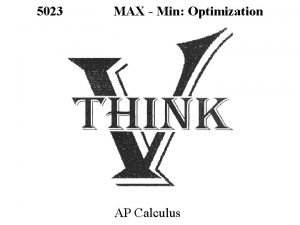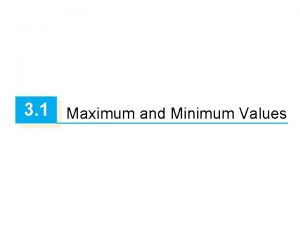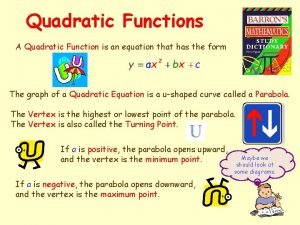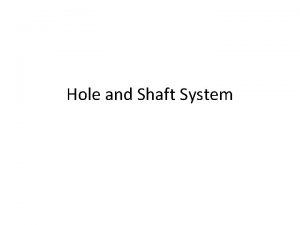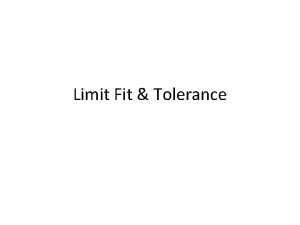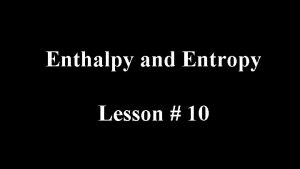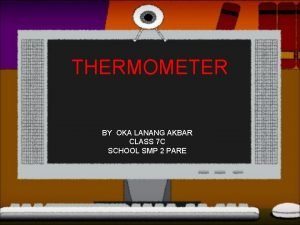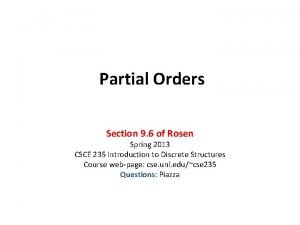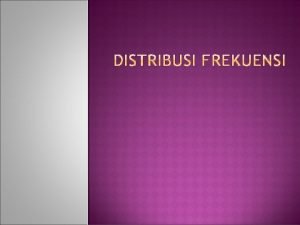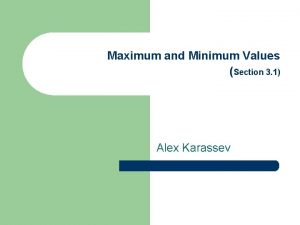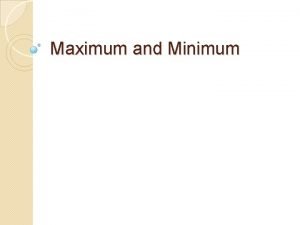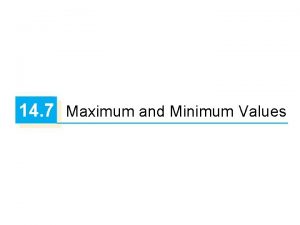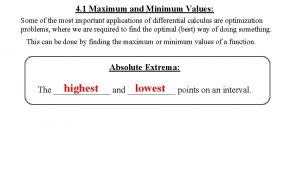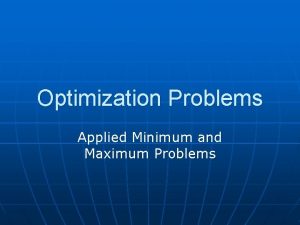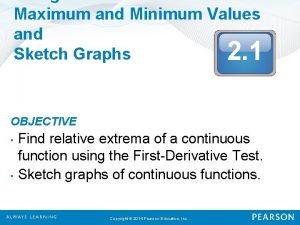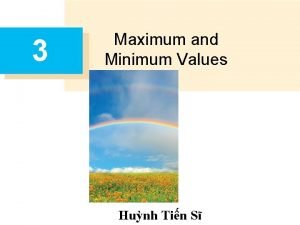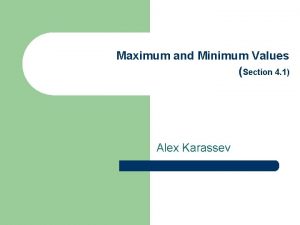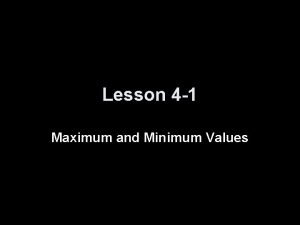4 1 Maximum and Minimum Values Some of
















- Slides: 16

4. 1 Maximum and Minimum Values: Some of the most important applications of differential calculus are optimization problems, where we are required to find the optimal (best) way of doing something. This can be done by finding the maximum or minimum values of a function. Absolute Extrema: highest lowest The _______ and ______ points on an interval.

The Extreme Value Theorem: st pic), then f has continuous * if f is ________ on a closed interval [a, b] (1 BOTH a MINIMUM and MAXIMUM _______________________________

We can write an extrema (minima or maxima) in three different ways: 1) The absolute maximum occurs at the point (3, 5) 2) The absolute maximum is f (3) = 5 (the y-value or function value) 3) The absolute maximum occurs when x = 3. Extrema are _______!!! y - values

f (c) local max & absolute max f (d) local min & absolute min f (d) absolute min f (c 1) & f (c 2) local max & absolute max f (d) local min & absolute min No max or min f (2) absolute min

EX #1 For each of the numbers a – e, state whether the function has a local min/max, absolute min/max, or neither. a. __________ b. __________ Absolute min only Local max Absolute max & c. __________ d. __________ Local min e. __________ Local max

Fermat’s Theorem: If f has a local maximum or minimum at c, and if f’(c) exists, then f’(c) = 0. EX #2: Find the extrema of Find f’ and set = 0. Test values on both sides of 0 for local extrema. Local minimum at (0, 0) Test 0 on the entire domain for absolute extrema. Absolute minimum at (0, 0) EX #3: Find the extrema of Find f’ and set = 0. Test values on both sides of 0 for local extrema. NO Local min or max at (0, 0) Test 0 on the entire domain for absolute extrema. NO Absolute min or max at (0, 0)

Find the y-coords. of these x-coords and the x-coords of the given interval. Absolute max only Local min Local max Local min & Absolute min Neither

Critical Numbers: * Let f be defined at c. f’(c) = 0 or f’(c) = DNE critical number If ___________ (zeros on top and/or bottom) at c, then c is a _______ of f. ONLY OCCUR RELATIVE EXTREMA __________ AT CRITICAL NUMBERS!!! endpoints critical number ABSOLUTE EXTREMA can occur at ________ AND ________

Find f’ and set = 0. Product Rule. Critical numbers are 3/2 and 0.

EX #5: Find f’ and set = 0. Product Rule. Critical numbers are 4 and 0.

To find Absolute extrema (Abs. max/min) on a closed interval: 1. find the critical numbers of f 2. evaluate f at each critical number 3. evaluate f at the endpoints 4. lowest value = absolute min; highest value = absolute max

* where does f’(x) = 0 and DNE: * evaluate critical numbers and endpoints: Absolute min Absolute max

EX #6: differentiate: where does f’(x) = 0 and DNE: evaluate critical numbers and endpoints: Absolute min Absolute max

EX #6: differentiate: where does f’(x) = 0 and DNE: evaluate critical numbers and endpoints: Absolute max Absolute min

differentiate: where does V’(T) = 0 and DNE: Quadratic Formula evaluate critical numbers and endpoints: Since our temperature has the given interval, 0 < T < 30, 79. 5 is out. Absolute min

 Absolute max vs local max
Absolute max vs local max Quadratic function maximum
Quadratic function maximum Y^2=ax graph
Y^2=ax graph Relative vs absolute max and min
Relative vs absolute max and min Maximum mode of 8086
Maximum mode of 8086 Maximum and minimum word problems
Maximum and minimum word problems Relative vs absolute max and min
Relative vs absolute max and min Derivative maximum and minimum
Derivative maximum and minimum Extreme value theorem
Extreme value theorem Example of quadratic function
Example of quadratic function 35h7 tolerance
35h7 tolerance Transition fit
Transition fit Minimum enthalpy and maximum entropy
Minimum enthalpy and maximum entropy What is the use of maximum and minimum thermometer class 7
What is the use of maximum and minimum thermometer class 7 Topological ordering
Topological ordering Cara mencari nilai minimum statistik
Cara mencari nilai minimum statistik Minimum maximum value
Minimum maximum value

